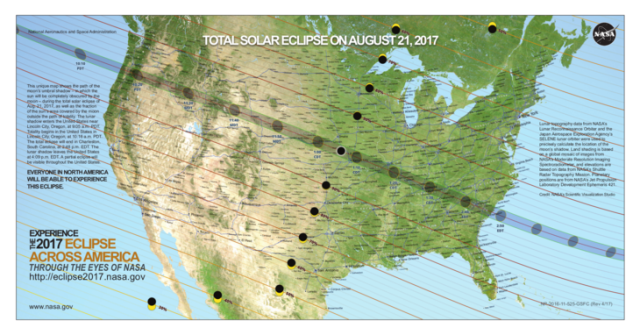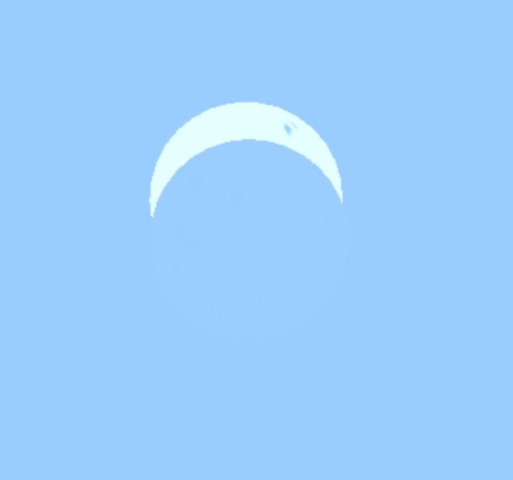
For a brief period Monday, day will become night during a rare total solar eclipse in several U.S. states. The sun will vanish, and bright stars and planets will appear in the sky above.
According to NASA, the last time any American witnessed a total solar eclipse was Feb. 26, 1979. It’s also been 99 years since a total solar eclipse crossed the United States from the Pacific to the Atlantic Coast. The total eclipse, which occurred June 8, 1918, passed from Washington to Florida.
On Monday this eclipse’s path, where the moon will totally cover the sun and the sun’s corona – can be seen, will stretch from Lincoln Beach, Ore., to Charleston, SC. To see totality, you will need to be inside the narrow path, which is about 70 miles wide, of the moon’s shadow.
Over a period of an hour-and-a-half, it will pass over Oregon, Idaho, Wyoming, Montana, Nebraska, Iowa, Kansas, Missouri, Illinois, Kentucky, Tennessee, Georgia and North and South Carolina. Its longest duration will be near Carbondale, Ill., where the sun will be totally covered for two minutes and 40 seconds.
All of North America will be able to see a partial eclipse, including the central Pennsylvania region.

“What we will see in Pennsylvania is a partial solar eclipse where the moon will pass in front of the sun beginning at about 1:15 p.m. and reaching the maximum eclipse around 2:35 p.m.,” explained Christopher Palma, associate head for undergraduate programs, Penn State Department of Astronomy & Astrophysics.
“At that time, the sun will be approximately 80 percent blocked by the moon.” Palma provided GANT News with a simulated image of the eclipse produced with software called “Starry Night” that shows how much of the sun to expect to be visible at maximum eclipse.
The eclipse will only be visible if skies are clear, however. A forecast on the National Weather Service Web site projects Monday to be “sunny, with a high near 86” degrees.
According to NASA, this will be the last total solar eclipse in the United States until April 4, 2024. However, it won’t stretch the width of the country and will move from Mexico to Maine and then traverse New Brunswick and Newfoundland. Another eclipse, which will move from coast to coast, will not happen until Aug. 12, 2045.
You can view this rare astronomical phenomenon Monday, but it’s vital to protect your eyes. To safely view central Pennsylvania’s partial eclipse, you must use special-purpose solar filters, such as “eclipse glasses,” the entire time.
“It’s very dangerous to look directly at the eclipse.” Your regular sunglasses are not safe; you need to have very specific ISO-approved glasses, said Dr. Edward M. Lopez, O.D., of Clearfield Family Eyecare.
If you look directly at the eclipse Monday, Lopez said you put yourself at risk of burning your retina and the damage can be irreversible. He noted that locally, there will only be a partial eclipse, which is when damage can occur without proper eye protection.
Palma agreed that the best way to view the eclipse safely is with “eclipse glasses,” but he said that most places have sold out of them.
Customer Service Departments at the Lowe’s Home Improvement and Wal-Mart stores of Clearfield and DuBois confirmed the “eclipse glasses” have sold out and will not be available in-store before the eclipse.
According to Palma, if you don’t have “eclipse glasses,” the best alternative is to use pinhole projection. He encouraged people to review safety information on the NASA and American Astronomical Society Web sites.
Palma added that it’s “perfectly safe” to be outside during the eclipse. He said most people know better than to look at the sun directly with their eyes, camera or other unfiltered device.
For more information, visit NASA’s Eclipse 2017 Web site and the American Astronomical Society Web site.


